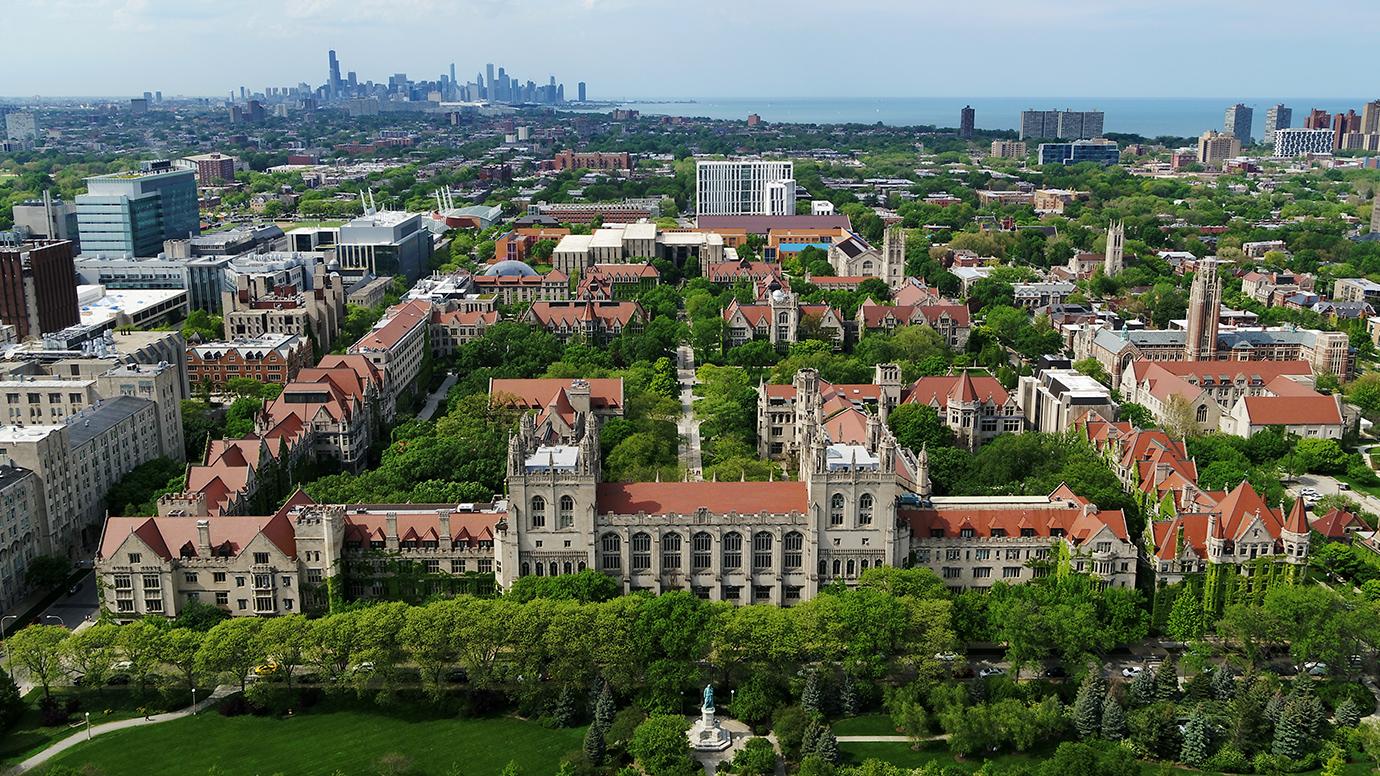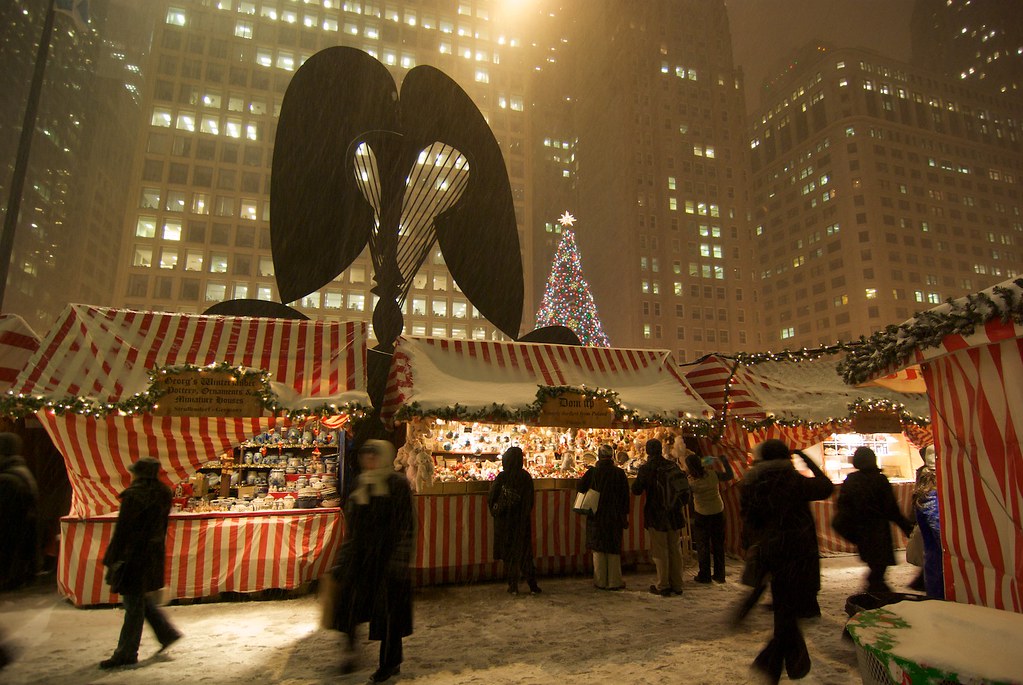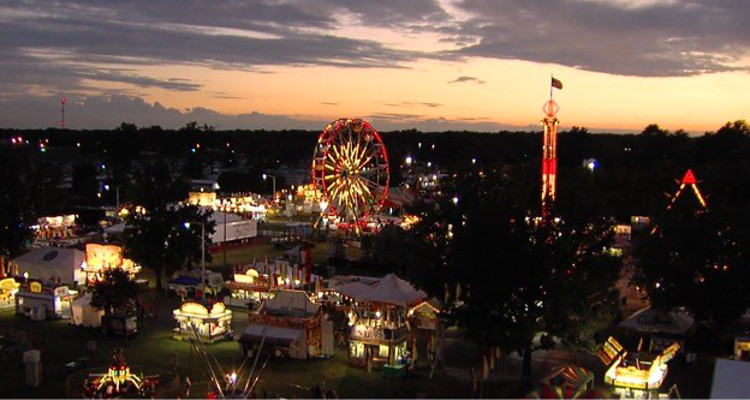- Details
 “Everything begins with an idea,” said Earl Nightingale. Ideas have the power to change the world. University of Chicago has played host to some of the most powerful ideas in the world. A new series of video shorts from University of Chicago aim to highlight the role the researchers and scientists of the University have played in changing the universe and our understanding of it. The series is called “The Day Tomorrow Began” and portrays compelling stories in video, podcast and written formats. Every story details a groundbreaking and gripping idea or discovery.
“Everything begins with an idea,” said Earl Nightingale. Ideas have the power to change the world. University of Chicago has played host to some of the most powerful ideas in the world. A new series of video shorts from University of Chicago aim to highlight the role the researchers and scientists of the University have played in changing the universe and our understanding of it. The series is called “The Day Tomorrow Began” and portrays compelling stories in video, podcast and written formats. Every story details a groundbreaking and gripping idea or discovery.
Could you ever imagine a star collapsing in on itself? A light, once shining so bright, suddenly turning into the darkest void you have ever seen. Indian-American scientist Subrahmanyan Chandrasekhar could imagine it. He is the first story topic covered, for his role in discovering black holes. In 1931, at only the age of 19, Chandrasekhar was the first person to calculate that stars would ultimately collapse in on themselves at the end of their lives. And if the star had enough mass, it would create a black hole. This is only one of the fascinating stories the series has to tell.
Thinkers and scholars of the world have always advanced our way of life. Today, higher education and its researchers are facing challenges when it comes to lack of funding. The series was created, in part, as a hope to reinvigorate people’s passion for research and new ideas. “There’s a tremendous belief that universities need to play, and do play, a role in helping drive innovations and breakthroughs that really reshape our world,” said Paul Rand, vice president for communications at the University of Chicago.
To watch or listen to the captivating series “The Day Tomorrow Began”, you can visit here.
- Details
 Looking for a great place to enjoy holiday cheer? Look no further! Last holiday season Chicago’s Christkindlmarket was ranked the third best holiday market in the U.S. in 2021 by U.S Today’s 10 Best Readers’ Choice Awards. This year the market is expected to not only maintain, but exceed expectations. Established in 1996 by the German American Events, LLC, the Chicago market plays host to international and local vendors, supplying a unique array of items for all visitors. The market is located in the Daley Plaza of downtown Chicago, and the German-style outdoor market has become so popular multiple locations in Aurora and Wrigleyville have been added over the years. This year the market will run from Nov. 18 – Dec. 24, Sundays – Thursdays: a.m. – 8 p.m. and Fridays – Saturdays: 11a.m. – 9 p.m.
Looking for a great place to enjoy holiday cheer? Look no further! Last holiday season Chicago’s Christkindlmarket was ranked the third best holiday market in the U.S. in 2021 by U.S Today’s 10 Best Readers’ Choice Awards. This year the market is expected to not only maintain, but exceed expectations. Established in 1996 by the German American Events, LLC, the Chicago market plays host to international and local vendors, supplying a unique array of items for all visitors. The market is located in the Daley Plaza of downtown Chicago, and the German-style outdoor market has become so popular multiple locations in Aurora and Wrigleyville have been added over the years. This year the market will run from Nov. 18 – Dec. 24, Sundays – Thursdays: a.m. – 8 p.m. and Fridays – Saturdays: 11a.m. – 9 p.m.
History of the market goes all the way back to 16th century Germany, where in Nuremberg the first Christkindlmarket was established. It was the first outdoor market of its kind. The Chicago market takes inspiration from Nuremberg. Every year Chicago, and its Aurora and Wrigleyville counterparts, seek to unite German and European tradition and support local and international vendors. The markets in Illinois are known for their high quality of vendor food, drinks, gifts and holiday cheer. For over 20 years now, the Chicago Christkindlmarket has been a haven for creating fun and unique family memories during the holidays.
Items that can be found at the vendors storefronts include things like Christmas ornaments from Bavarian Tradition, Belgian hot chocolate blends from Bob’s Hot Chocolate, olive wood handcrafted items like music boxes from Bethlehem Nativity, or handcrafted bags and wallets from Ecodunia. If shoppers cannot wait for the markets to open to buy these wonderful items, they can even buy them online. Illinois’ Christkindlmarkets are a staple of the holiday season in the state and they create memories that last a lifetime.
To learn more about all three Christkindlmarkets located in Illinois, and to shop from their vendors online, you can visit here.
- Details
 Break out the eggnog and Mariah Carey, the holiday season is approaching. Shopping for friends and loved ones can be daunting, and ideas might be hard to come by. However, stumped shoppers need worry no more! The 2022 Illinois Made Holiday Gift Guide has been released, and contains many special and wonderful gift ideas, which were made right here in Illinois. Gift givers can get ready for the holiday season while also shopping locally and supporting Illinois businesses. The Gift Guide showcases unique gifts, organizes them by categories, such as gifts for him or her, and includes links to where the items can be bought, making it an easy and simple tool for shoppers. Gifts on the list include a range of prices and themes, so anyone can find something within their price range that will suit the person they are shopping for.
Break out the eggnog and Mariah Carey, the holiday season is approaching. Shopping for friends and loved ones can be daunting, and ideas might be hard to come by. However, stumped shoppers need worry no more! The 2022 Illinois Made Holiday Gift Guide has been released, and contains many special and wonderful gift ideas, which were made right here in Illinois. Gift givers can get ready for the holiday season while also shopping locally and supporting Illinois businesses. The Gift Guide showcases unique gifts, organizes them by categories, such as gifts for him or her, and includes links to where the items can be bought, making it an easy and simple tool for shoppers. Gifts on the list include a range of prices and themes, so anyone can find something within their price range that will suit the person they are shopping for.
Those shopping for people with a sweet tooth can find such items as the Ultimate S’mores Kit from Swoon Living in Chicago or gourmet chocolates from Cocoa Blue Chocolates in Rochester. Friends of coffee lovers can get seasonal roasts from Brewpoint Coffee in Elmhurst. Shoppers looking for gifts for relaxation and self-care can buy things such as handcrafted soy candles from Bright Endeavors in Chicago. Gift givers who want a more personal or artistic touch can buy framed prints, puzzles or snow globes from River Bend Gallery in Galena.
If you are interested in the full list of one-of-a-kind gift ideas from Illinois, visit here.
- Details

Ms. Frizzle and her magic school bus can make way, Illinois has made a new, impressive bus to take students to and from school. Lion Electric announced on Nov. 2, 2022 that they had produced their first American-made LionC zero-emission electric school bus at their factory in Joliet, located in Will County.
Lion electric selected Joliet in May of 2021, providing new job opportunities to the area. Over the first three years of its presence in Will County, Lion Electric will create over 800 new jobs, and then a total of 1,400 jobs with in the first six years. Lion Electric is in Will County to stay and provide permanent jobs to many residents. Now, they are providing environment friendly transportation to our students. Lion Electric has always been dedicated to moving towards electric vehicles, sustainability and decreasing the overall environmental impact transportation has. This dedication has paid off as they put over 700 electric vehicles on the road, supporting commuters and students as they traveled over 10 million miles. Joining that number is the new, electric school bus thanks to the manufacturing site in Joliet. Illinois is devoted to the fight against climate change and helping our environment, and Joliet is a foreground in that fight.
Lion Electric expects the Joliet factory to have an annual production capacity of 20,000 buses and trucks after scaling their manufacturing operations. Joliet will first focus on manufacturing electric school buses, as there has been a nationwide surge in demand for electric buses. Several cities and states have committed to transitioning to electric school buses. The Climate and Equitable Jobs Act, passed in Illinois General Assembly in 2021, increased support for electric transportation, aiming to put 1 million battery-powered cars and trucks in Illinois by 2030, and included incentives for electrifying Illinois school buses. One step towards Illinois’ goal has been made as this LionC zero-emission electric school bus will be used at Troy Community Consolidated School District 30-C in Illinois. Joliet has been a key player in meeting this goal, and will serve a vital role in the future of Lion Electric and the future of sustainability in the nation.
School districts in Illinois and around the nation are looking to decrease their impact on the environment by moving towards electric school buses. Lion Electric has committed themselves in helping school districts in that transition. The first LionC zero-emission electric school bus is a positive step towards achieving that goal. The buses may not contain real magic like Ms. Frizzle’s, however the impact Joliet’s electric school buses will have on the environment and economy almost seems magical.
To learn more about Lion Electric and their LionC zero-emission electric school bus click here.
- Details
 Corn dogs, cotton candy, ferris wheels and carnival games. Nothing brings out fond memories like the smell of fried food and shouts of joy at local state fairs. The Du Quoin State Fair recently had its 100th annual fair, with attendance levels reaching an all-time high in the fair’s history. This marks a historic occasion for the fair, having its centennial anniversary coincide with record attendance. Over 170,000 people attended the Du Quoin State Fair this year, which was a 13.5% increase from attendance in 2021. Attendance in 2021 was 150,186 people. 2022 is the third year in a row that the fair has seen a steady increase in attendance numbers. The Du Quoin State Fair is growing in notoriety, which is a welcome benefit to the residents and businesses of the city. The Du Quoin State Fair this year generated over $320,000 in profit.
Corn dogs, cotton candy, ferris wheels and carnival games. Nothing brings out fond memories like the smell of fried food and shouts of joy at local state fairs. The Du Quoin State Fair recently had its 100th annual fair, with attendance levels reaching an all-time high in the fair’s history. This marks a historic occasion for the fair, having its centennial anniversary coincide with record attendance. Over 170,000 people attended the Du Quoin State Fair this year, which was a 13.5% increase from attendance in 2021. Attendance in 2021 was 150,186 people. 2022 is the third year in a row that the fair has seen a steady increase in attendance numbers. The Du Quoin State Fair is growing in notoriety, which is a welcome benefit to the residents and businesses of the city. The Du Quoin State Fair this year generated over $320,000 in profit.
In addition to games and food, the fair also had a number of live music shows. Du Quoin was host to seven concert performances, which drew in over 11,500 people. One such artist was Cole Swindell, a country artists, who had over 3,500 tickets sold for his performance. Swindell’s performance was the fourth largest attended show in the Du Quoin State Fair’s history since 2012. It was lucky Swindell’s performance was so popular, as the fair had an unfortunate last-minute cancellation from country artist Randy House this year, making the grandstand stage to sit empty for the first times in years.
Despite that hiccup, this year’s Du Quoin State Fair was still a raging success filled with plenty of fun times for families and individuals. If anyone wants to add to the growing number of attendees to this famous and enjoyable State Fair, the 2023 Du Quoin State Fair will run Aug. 25 – Sept. 4.
More Articles …
- Manufacturing Matters: Illinois led the nation in new manufacturing job growth in July
- Illinois Manufacturing Industry is worth over a half trillion dollars
- These Illinois astronomers get coveted time with the new James Webb Space Telescope
- Improved I-74 Mississippi River Bridge wins national recognition
- Chicago named Second Best City in the World



